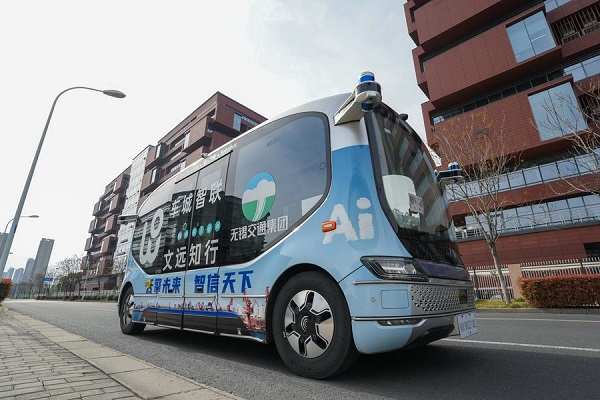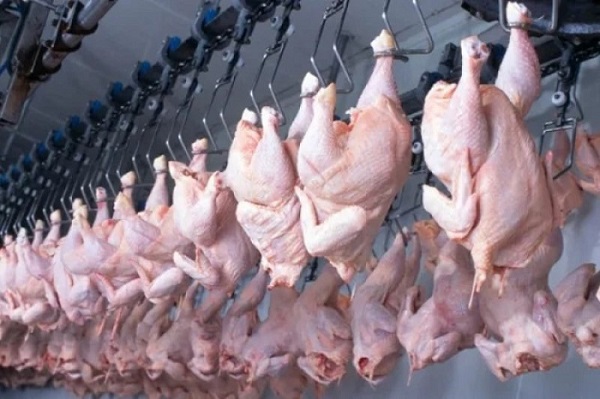SHENZHEN – IN the dynamic economic hub of Shenzhen, commuters can now reserve seats on self-driving buses with just a few taps on an app. Far from a publicity stunt, this service is the first instance in China where intelligent connected buses have been incorporated into the wider public transport system.
What is unfolding in Shenzhen is more than a transportation experiment. It is a glimpse into a consumer experience model that Chinese policymakers and entrepreneurs are calling the “scene economy.”
The significance of this term, referring to the application of technology in real-life consumption scenarios, is perhaps best illustrated by its swift adoption: By June last year, more than 60 cities among the top 100 GDP cities had included this term in their economic plans, according to Greatwall Strategy Consultants.
Some industry observers view such a move as part of a broader strategy to incubate new growth drivers in the face of global uncertainty. But what exactly does it mean?
Is it about creating innovative parks, organizing promotional events or implementing a package of policy measures? Popular jargon in China’s tech sector may offer some clues. Terms like “paotong” (getting it running) and “bihuan” (closed-loop integration) are frequently used to assess whether a technology can be smoothly implemented and deliver tangible benefits.
“New technologies must be applied to improve and evolve, and this requires suitable scenarios,” Jason Tang, chairman of the Shanghai Consumer Foundation, told Xinhua.
“Thus, creating conditions for emerging technologies is crucial to transform laboratory results into economic returns,” Tang added.
DIGITALLY-ENABLED
Building accessible digital infrastructure is, of course, a prerequisite.
In the case of Shenzhen’s driverless bus fleet, the initiative benefited greatly from the digital upgrades of the local public transport system. This system integrates intelligent scheduling platform, 5G vehicle-road coordination, multi-sensor fusion perception and high-precision map positioning, which enable millisecond-level response to road conditions and precise decision-making.
At a recent forum in Shenzhen, the city unveiled China’s first technical guidelines for city-wide, all-vehicle and all-scenario road access. These guidelines are poised to provide an open framework for testing highly and fully autonomous vehicles in complex urban environments.
Shenzhen had opened over 2,100 kilometers of test and demonstration roads by May, accounting for about 24 percent of the city’s total road mileage, said Xu Wei, deputy director of Shenzhen’s transportation bureau.
Additionally, China is proactively driving the integration of AI and 5G technologies into traditional industries to unlock their potential applications.
These technologies have started to make an impact elsewhere, too. Take China’s mining sector, this traditional industry is evolving to become more low-carbon and intelligent.
A video clip of about 100 autonomous mining trucks in northern Chinese city of Hulunbuir has gone viral on social media as a “sci-fi blockbuster.” Guided by 5G signals, the trucks navigate through vast mines, automatically avoiding obstacles in low-visibility conditions like snow, dust and night with only 40 meters of visibility.
GOVERNMENT INITIATIVES
A 2024 RAND Corporation report noted that 80 percent of AI projects have stalled, and underscored the pressing challenge of how to translate AI’s enormous potential into concrete results.
Many AI projects fail due to insufficient data, overemphasis on cutting-edge technology rather than real user problems, and inadequate infrastructure for data management and model deployment, according to the report.
The Central Economic Work Conference last December, which called for large-scale demonstrations of new technologies, products and scenes, was the catalyst behind local government efforts to step up the real-world deployment of lab-developed technologies.
Instead of relying solely on financial incentives to attract investors, they are now promoting the profit potential of application scenes as a new approach to draw in businesses.
These cities are releasing “scene lists” to identify city-level needs and using measures, such as the establishment of promotional entities or pilot offices, and creating special funds to drive technology implementation.
In Shenzhen, the entire city is a testing ground for new technologies and products.
“We plan to open 100 more application scenes by 2025, with comprehensive, all-day, full-access in fields like municipal sanitation, emergency rescue, AI-assisted healthcare and medical wellness,” said Lin Yi, director of Shenzhen AI industry office.
With the rapid growth of China’s silver economy, the elderly population is increasingly seen as an exciting frontier with rich potential for tech application. This week, the Ministry of Industry and Information Technology and the Ministry of Civil Affairs initiated a pilot program for intelligent elderly care robots.
The project will focus on care for the disabled and those living with neurodegenerative conditions, emotional companionship, health promotion, smart environments and daily living assistance.
On June 6, Chongqing released its first list of 42 low-altitude economy application scenes, spanning urban governance, firefighting, emergency rescue, inspections and freight logistics.
The same day, Shanghai announced a call for quantum computing scenario plans, targeting the development of quantum hardware, software, algorithms and cloud platforms.
The Greatwall Strategy Consultants report has identified 419 key scenes, highlighting three critical innovation areas: energy storage, new energy vehicles and intelligent driving, and intelligent manufacturing.
“China’s strong manufacturing base and its vast, deep consumer market offer immense innovation potential in applications, which in turn facilitate better supply-demand matching,” said Tang.
Xinhua / CAJ News




